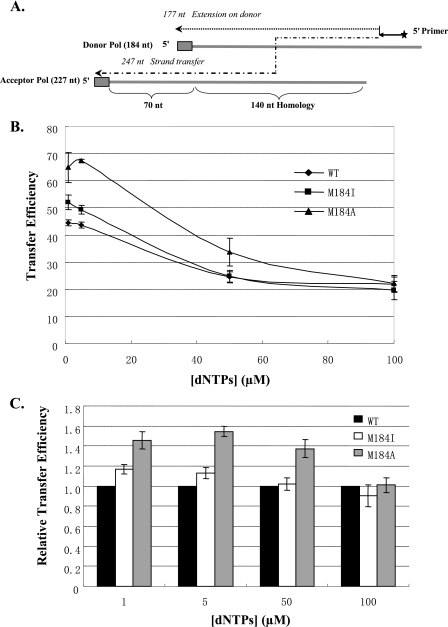FIGURE 4.
Strand transfer activity of wild-type and mutant HIV-1 RTs. A, schematic of the substrate is shown. For donor extension reactions, a 5′-end-labeled DNA primer was annealed to a 184-nt donor RNA. A 177-nt donor extension product (DE) was formed when the DNA primer synthesized to the 5′-end of the donor (small dotted line). For transfer reactions, a second 227-nt RNA template acceptor, which shares 140 nt of homology with the donor, was added to the reaction. A 247-nt transfer product (TP) was produced when the DNA transferred from donor template to the acceptor (thick dotted line). End transfers are prevented by a 16-nt non-viral sequence at the 5′-end of the donor template (gray box). B, the transfer efficiencies of wild-type and mutant HIV-1 RTs are presented at varied dNTP concentrations. Strand transfer reactions were performed with 1, 5, 50, and 100 μm of each dNTP in the presence of NC, added to a concentration sufficient to give 200% coating (2 NC molecules per 7 nt), with wild-type, M184I, and M184A RTs. All reactions were terminated after 30 min. The transfer efficiency was calculated using the equation (TE = (TP/(TP + DE)) × 100%). Values were averaged from at least three experiments. C, the relative transfer efficiencies of mutant HIV-1 RTs to wild-type RT were indicated.

